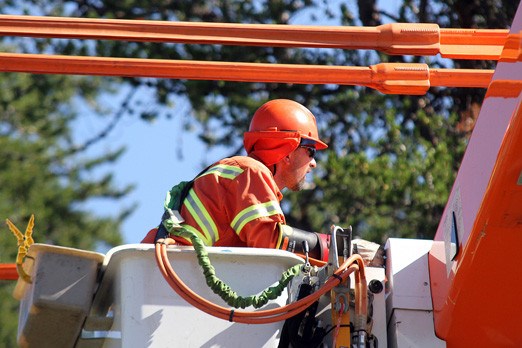While winds blew as fast as a tornado, the storm that rocked the city Wednesday night so far shows no evidence of funnel clouds, say officials with Environment Canada.
But the public can help change the call, but only if enough evidence is submitted.
Environment Canada is encouraging people to send them pictures and videos of the storm itself or even damage left in its wake.
"Damage can tell a lot about wind," Environment Canada’s Marie-Eve Giguere said from her Toronto office during a phone interview with tbnewswatch.com Thursday afternoon.
That will help the government agency determine whether or not to send a team to
investigate a possible tornado. Although as of right now the damage looks to be caused by straight-line wind.
"I’m not ruling out a tornado," Environment Canada’s Marie-Eve Giguere. "But I have no evidence to confirm that."
The storm formed around the Upsala/Atikokan area moving east and hit Thunder Bay around 8:30 p.m. Wednesday. Ahead of it was a gust of wind blowing up to 115 kilometres per hour, which would be on the low end of the tornado classification system if the winds were circular.
Giguere said Ontario has more than a dozen confirmed tornados every year, but the actual number of funnel clouds that touch down in the province is likely more than that. Those storms just happen in places where people don’t see them.
Environment Canada uses radar to track storm systems, but that radar can only tell them what’s happening in the clouds.
To find out what’s happening below the clouds, Environment Canada relies on trained members of the public called spotters to tell them what’s happening and collect visual data such as clouds and damage, once they’ve found safe shelter.
Thunder Bay has a few spotters, but so far no reports have come in to suggest that there was a tornado.
If enough interest is shown, Environment Canada will come to the city to train spotters free of charge through its Canwarn program.
To submit pictures and video to Environment Canada, email [email protected]
Sign in or register
- Messages
- Post a Listing
- Your Listings
- Your Profile
- Your Subscriptions
- Your Likes
- Your Business
- Support Local News
- Payment History
Registered Users
Already have an account?
New Users
Create a free account.
